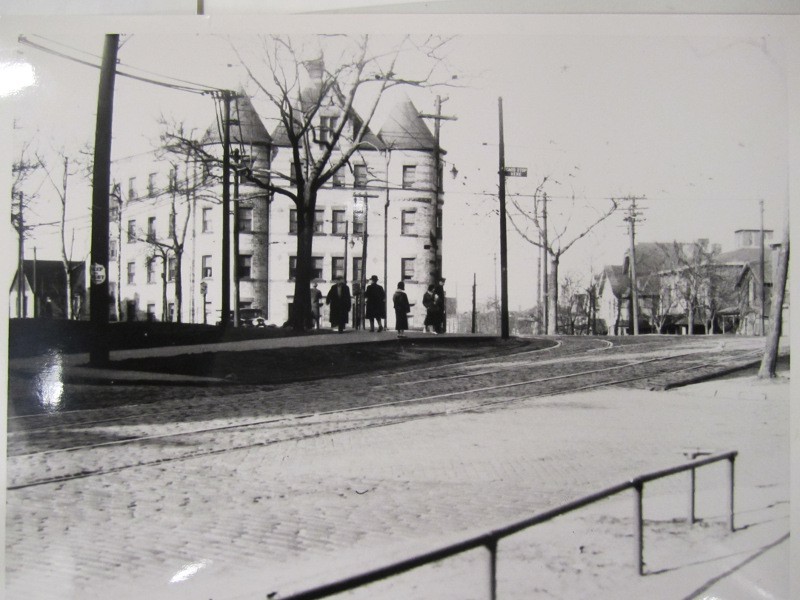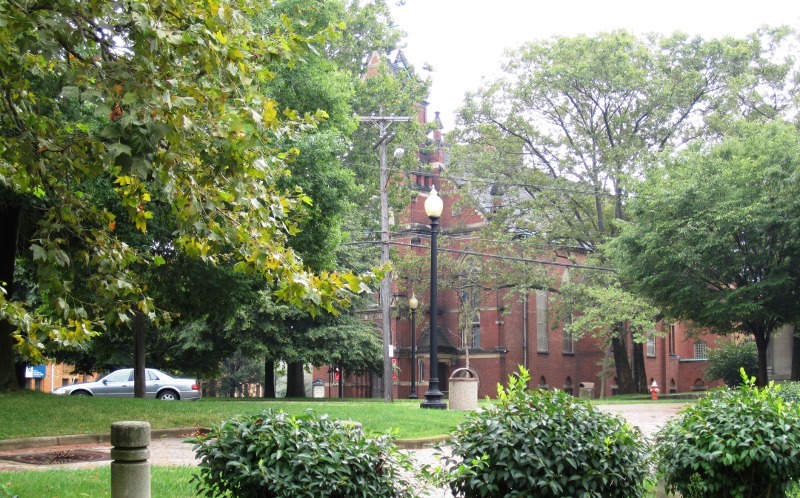Franklin Circle
The Centerpiece of Josiah Barber's Radial Street Plan

Franklin Circle, the centerpiece of one of Cleveland's rare radial street designs, was surveyed in 1836--the same year in which Ohio City became a city and Cleveland's chief commercial competitor across the Cuyahoga River. The land for the Circle, which lies at what is today the intersection of West 28th Street, Fulton Road, and Franklin Boulevard, was donated to Ohio City by Josiah Barber, a Connecticut pioneer who came to the Western Reserve in 1818 and settled the area just west of the Cuyahoga River and just south of the Lake. Today this area lies at the heart of the Ohio City neighborhood.
As originally laid out, the Circle was called Franklin Place or Franklin Square, and was informally utilized for several decades as an open farmers market. Later, after Ohio City was annexed to the City of Cleveland, Cleveland moved that "west side" market in 1859 to the northwest corner of Pearl (West 25th) Street and Lorain Avenue, and eventually in 1912 to the northeast corner of that same intersection where it has been known ever since as the West Side Market. The City then built on the Circle the west side's first public park, which featured a water fountain surrounded by an iron fence. In 1872, Franklin Boulevard was extended through the park as part of a renovation by the City of Cleveland. At about this time, the park was remodeled with a rock garden and, for years thereafter, was known as Modoc Park. In 1907, a combination of streetcar tracks and newly constructed apartment buildings contributed to almost destroy the park-like setting of the Circle, which thereafter became known simply as Franklin Circle.
From the mid-nineteenth century until the early twentieth century, Franklin Circle was surrounded by some of the grandest mansions on the west side of Cleveland, including those of Marcus Hanna, Daniel Pomeroy Rhodes, James Ford Rhodes, and Robert Russell Rhodes. Today, the Circle is still a pleasant area of the near west side with a park-like ambiance. However, most of the great mansions of the Circle are long gone. They have been replaced by multifamily and institutional buildings, including Lutheran Hospital and the Masonic Temple, which in the early twentieth century joined Franklin Circle Christian Church as the predominant buildings on the Circle.
Images








